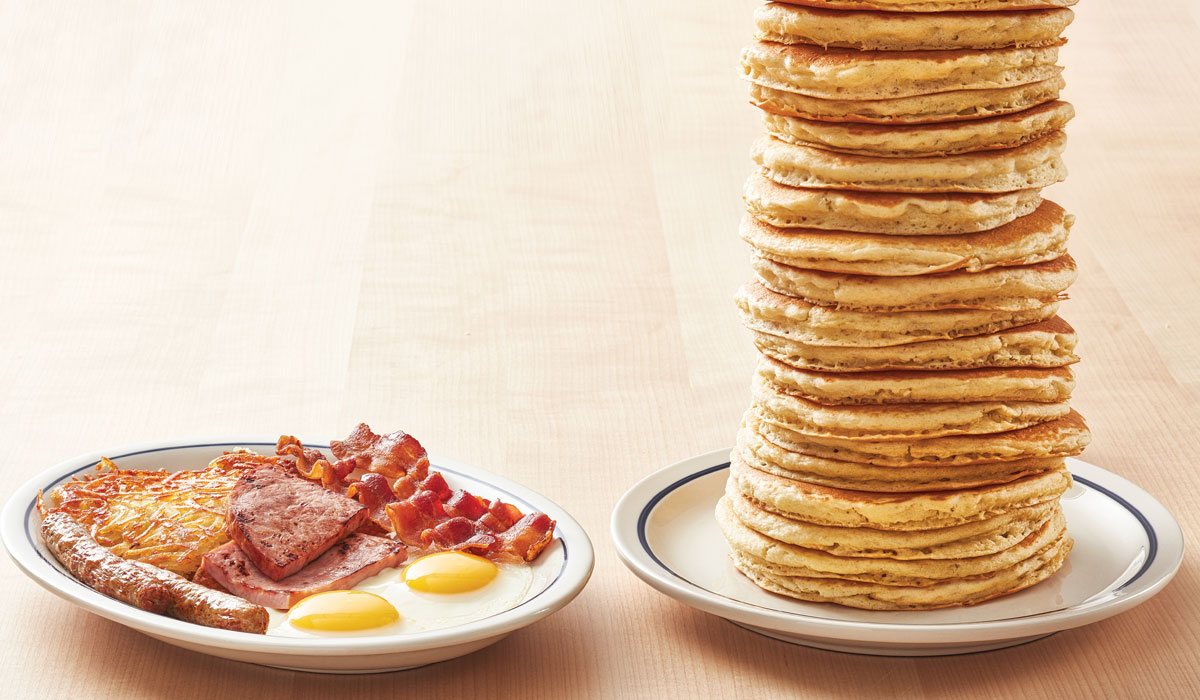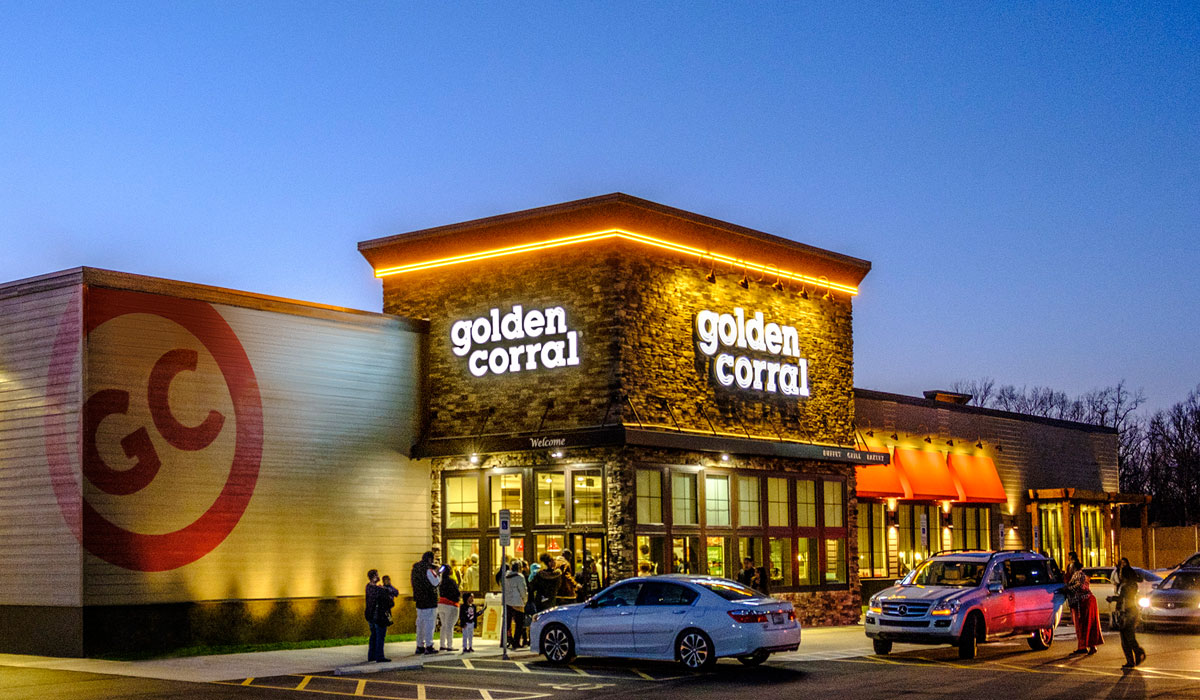










It would be easy to argue family dining served as the full-service subset undergoing the most disruption over the past few years. In 2018, it was the lone restaurant category to show declining revenue, according to Black Box Intelligence. While the drop was sleight—negative 0.3 percent—it illustrated a broader, underlying story.
Overall, a saturated restaurant landscape was leaning on two main growth levers: Higher checks to counter lower traffic (from more choices), and off-premises gains. These were both particularly challenged for family dining, a category generally defined by check averages below $12 with very limited or no alcohol service.
And, typically, family dining was a category dominated by a few recognizable players. Yet in recent years, regional upstarts joined in, brands like First Watch, Black Bear Diner, and Metro Diner. Increased competition left some of those legacy players reluctant to raise prices for fear of ceding share in a tightening race. However, higher checks remained a popular industry-wide lifeline given consumer willingness to spend. Millennials especially have proven they’ll fork up on experiences. So have millennial parents.
READ MORE: IHOP, Denny’s, and the changing face of family dining
But this dilemma began to shift in the months leading up to COVID-19. IHOP and Denny’s, for instance, poured heavy resources into digital to court younger consumers, as well as creative marketing campaigns and remodel programs that catered to a changing guest. In fact, this “millennial family” category fast became one of the hotbed groups for sit-down chains of all sizes to chase. They began to lean into “moments of connection” messaging, like Red Robin did, and other incentives that spoke to bringing people together, at affordable price points. IHOP generated 36 billion earned media impressions from its IHOb stunt. Denny’s was seeing 43 percent of its online transactions stem from guests aged 25–34. IHOP said 32 percent of its customers were 18–34 (overall not just online) and more than half of its traffic was coming from diners 34 and below.
Parents were seeking a comfortable place to bring the family nestled between quick service and polished or fine dining, where they could unplug a bit and reconnect. And some of the country’s biggest chains were delivering. Meanwhile, also turning up the dial on digital to reach new and younger guests and satisfy both ends of the consumer journey.
In May, Black Box said family dining, along with fine dining, was among the segments hit hardest by COVID-19, with sales declines in the 75–85 percent range. The reason was tied to some past issues. A lack of accessibility. Heavy reliance on dine-in business. And simply, daypart setbacks. Breakfast has remained pressured throughout the pandemic as routines get tossed.
IHOP president Jay Johns said during the company’s Q2 recap that overall sales improved fairly evenly across all dayparts in April and June for the brand, except at breakfast, which was 200 basis points behind lunch and dinner. However, its off-premises comps leapt 145 percent, year-over-year, primarily driven by traffic.
So that brings us to the current picture. Family dining has a unique opportunity to emerge from COVID-19 with tools it lagged before. Digital gains made during these past few months likely introduced the brand to new customers. And family chains could become an ideal place for families to reconnect, given the brand value, trust, and safety protocols, once quarantine fog lifts. The end result being a more well-rounded, innovation-forward segment ready to deliver an omnichannel experience, as well as what everybody has come to expect for generations. Bolstered by decades of equity, broad unit counts, and resources many competitors can’t match.
Here is a look at the Top 10 family dining chains heading into the year. It can serve as a baseline to see who was growing, falling, and who might just be ready to capitalize on the real state and market share opportunities left behind by the COVID-19 shakeout.
Note: Figures are year-end 2019 results, ranked by total systemwide sales.
2019 sales (in millions): $3,300
2018 sales (in millions): $3,235
Sales change (percent): 2
2019 unit count: 1,710
2018 unit count: 1,705
Unit change (percent): 0.3
2019 average-unit volumes (in thousands): $1,933
2018 average-unit volumes (in thousands): $1,916
2019 sales (in millions): $2,710
2018 sales (in millions): $2,695
Sales change (percent): 0.6
2019 unit count: 1,559
2018 unit count: 1,578
Unit change (percent): –1.2
2019 average-unit volumes (in thousands): $1,728
2018 average-unit volumes (in thousands): $1,692
2019 sales (in millions): $2,525
2018 sales (in millions): $2,440
Sales change (percent): 3.5
2019 unit count: 662
2018 unit count: 655
Unit change (percent): 1.1
2019 average-unit volumes (in thousands): $3,834
2018 average-unit volumes (in thousands): $3,754
2019 sales (in millions): $1,635
2018 sales (in millions): $1,681
Sales change (percent): –2.7
2019 unit count: 475
2018 unit count: 489
Unit change (percent): –2.9
2019 average-unit volumes (in thousands): $3,392
2018 average-unit volumes (in thousands): $3,438
2019 sales (in millions): $1,500
2018 sales (in millions): $1,480
Sales change (percent): 1.4
2019 unit count: 1,900
2018 unit count: 1,910
Unit change (percent): –0.5
2019 average-unit volumes (in thousands): $787
2018 average-unit volumes (in thousands): $774
2019 sales (in millions): $810
2018 sales (in millions): $845
Sales change (percent): –4.1
2019 unit count: 460
2018 unit count: 480
Unit change (percent): –4.2
2019 average-unit volumes (in thousands): $1,723
2018 average-unit volumes (in thousands): $1,716
2019 sales (in millions): $600
2018 sales (in millions): $675
Sales change (percent): –11.1
2019 unit count: 306
2018 unit count: 372
Unit change (percent): –17.7
2019 average-unit volumes (in thousands): $1,770
2018 average-unit volumes (in thousands): $1,765
2019 sales (in millions): $500
2018 sales (in millions): $400
Sales change (percent): 25
2019 unit count: 365
2018 unit count: 294
Unit change (percent): 24.1
2019 average-unit volumes (in thousands): $1,517
2018 average-unit volumes (in thousands): $1,501
2019 sales (in millions): $330
2018 sales (in millions): $350
Sales change (percent): –5.7
2019 unit count: 185
2018 unit count: 210
Unit change (percent): –11.9
2019 average-unit volumes (in thousands): $1,671
2018 average-unit volumes (in thousands): $1,659
2019 sales (in millions): $325
2018 sales (in millions): $300
Sales change (percent): 8.3
2019 unit count: 138
2018 unit count: 120
Unit change (percent): 15
2019 average-unit volumes (in thousands): $2,519
2018 average-unit volumes (in thousands): $2,667







